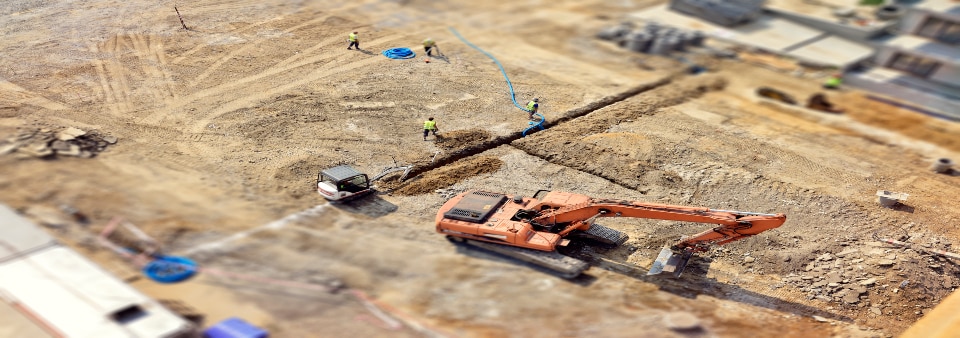How to achieve the most cost-effective ground investigations

We’ve now amended the popular British Standard on ground investigations. This blog post reprises its history, considers what’s covered in the standard and looks at what’s new.
Did you know that BSI first published guidance on effective ground investigation in 1957? This was the futuristic-sounding CP2001. It was replaced in 1981 by the first version of BS 5930. This broke new ground by standardizing many aspects of ground investigation for the first time. It was published around the same time as international guidance from ISRM and IAEG on similar themes, but the British Standard always had wider coverage because it included guidance on the selection of drilling methods and covered field and laboratory tests.
BS 5930 was revised in 1999; and twice amended to maintain compliance with other related standards. Then in 2015 we published a full revision. This updated site investigation requirements to assess their suitability for construction and to identify the characteristics of a site that affect the design and construction of the project. The revision emphasized the importance of the evolving ground model and that ground investigation is not necessarily a linear process. It also considered related issues including the environment and the security of adjacent land and property.
This standard superseded BS 5930:1999+A2:2010. Now BS 5930:2015+A1:2020 Code of practice for ground investigations has replaced the 2015 version.
Exploration and interpretation
Ground investigation is a process that starts with documentation about the site and its environs, and then proceeds with exploration and interpretation. The scope of the investigation will be regularly amended in the light of the data being obtained.
By the way, the term “ground investigation” (previously called “site investigation” in the UK) covers desk studies, field reconnaissance, and field and laboratory work within geographical, geological, hydrogeological and environmental contexts.
BS 5930 comprises 11 sections, starting with initial considerations of the technical, legal and environmental matters that need to be taken into account in selecting a site. Subsequent sections outline the procedures and information to be collected in desk studies and field reconnaissance; look at general aspects of planning investigations including what influences the selection of methods of investigation; discuss methods of intrusive investigation (including excavations and boreholes) and the methods of geophysics used for ground mapping.
The following sections deal with the terminology and systems used in describing and classifying soil and rock; describe the range of field tests that can be considered to measure appropriate geotechnical parameters; and outline the instrumentation that can be used to measure parameters or monitor field conditions.
The three concluding sections describe the range of laboratory tests on samples that can be used to measure geotechnical parameters; give details of the information to be included in field reports and look at the presentation, evaluation and interpretation of factual information; and finally set out requirements for investigations that continue beyond the construction phase.
2020 amendments
As we’ve seen, the standard has been reviewed regularly to ensure the content keeps pace with technological advances, changes to working practices, and with any other environmental and societal changes the standard should reflect.
Having conducted a root and branch revision in 2015, it wasn’t considered that the standard needed very much alteration. As a result, the 2020 amendment responds to comments received from industry since 2015; accommodates changes in BS EN ISO 14688, BS EN ISO 14689, BS EN ISO 17892 and related parts of BS 1377; and updates references.
The resulting document will help ensure that geotechnical and ground investigations are achieving strong results; that the most appropriate equipment is deployed; that ground investigations produce complete, accurate and informative descriptions of soils and rocks and that UK practitioners are carrying out their work in ground investigation and geotechnical design in accordance with the latest EN and ISO standards.
Also, if the whole supply chain adopts the standard, it will maximize efficiency and increase the likelihood that failures, such as delays and excessive costs, are avoided.